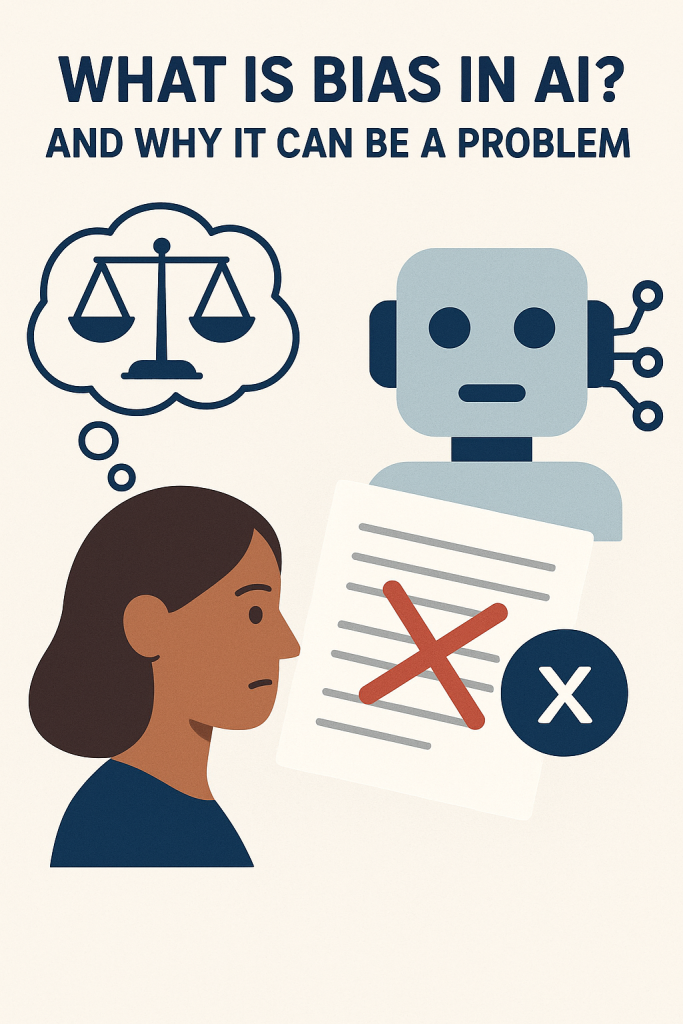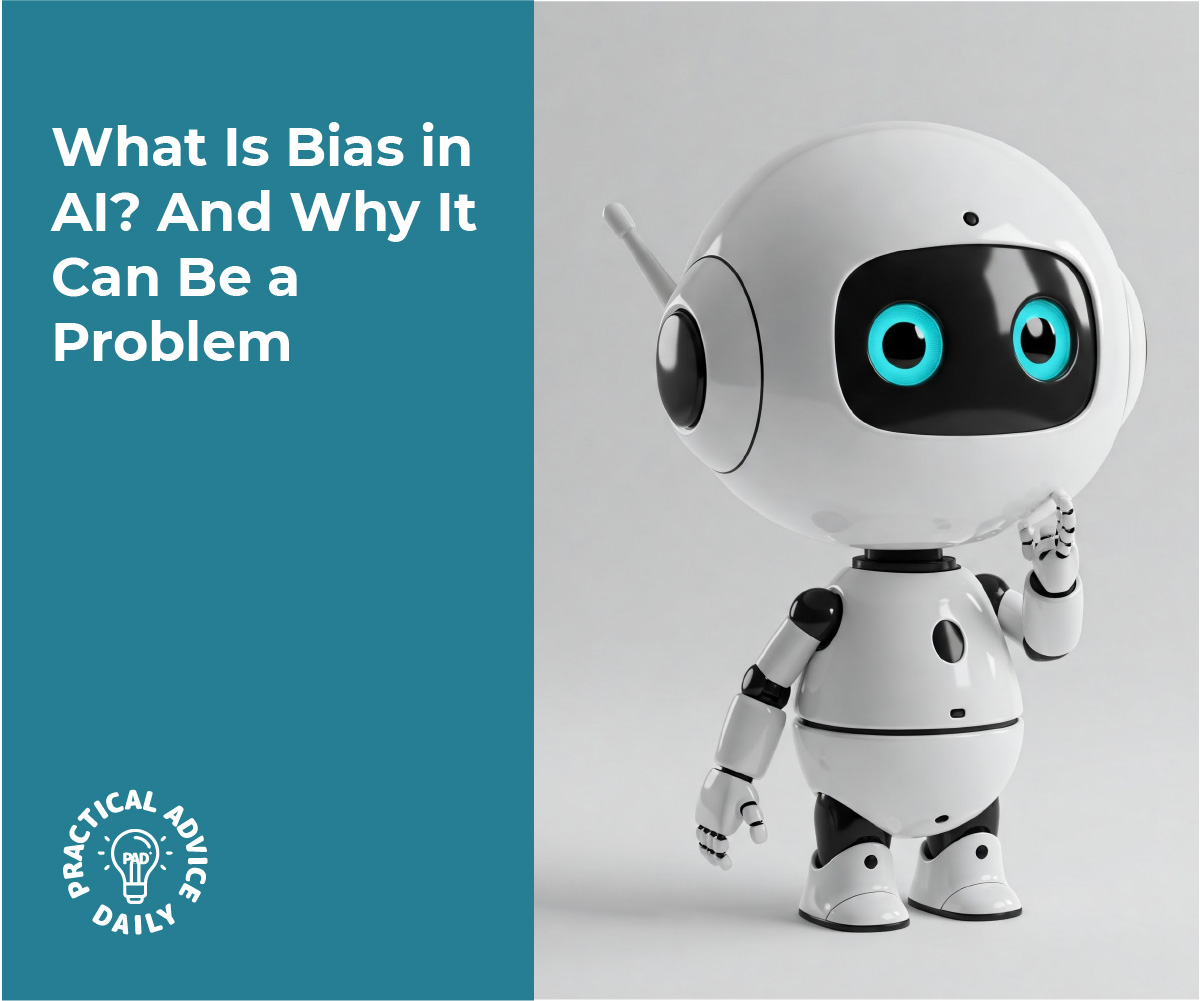You’ve probably heard that artificial intelligence (AI) is being used to help with everything from job applications to health care. But did you know it can sometimes make unfair decisions? That’s because AI can accidentally “learn” human bias.
In this beginner-friendly article, we’ll explain what bias in AI means, how it can happen, and why it’s important to pay attention. No tech knowledge needed—just a little curiosity.
Table of Contents
Key Takeaways
- AI learns from data, and if that data has bias, the AI may copy it.
- Bias in AI can lead to unfair treatment or decisions—especially in areas like hiring or healthcare.
- People are working to fix these issues, but awareness is the first step.
- Asking questions and staying informed helps you understand AI more confidently.
What Is Bias in AI?
Let’s start simple: bias means unfair favoritism or prejudice. We all have personal preferences—sometimes without realizing it.
AI systems don’t think or feel like people do. But they learn from patterns in data, and if those patterns are biased, the AI can start copying those unfair behaviors.

How Does AI Learn Bias?
Imagine teaching a child using only certain books. If those books leave out certain groups of people or show them unfairly, the child may grow up with a skewed view of the world.
The same thing happens with AI. It learns by reading data—emails, photos, resumes, even voice recordings. If the data:
- Mostly comes from one group of people
- Reflects unfair treatment in the past
- Leaves out important perspectives
…the AI can repeat and even reinforce those same problems.
Real-Life Examples of AI Bias
Here are a few situations where AI bias has already caused issues:
- Job Applications:
Some resume-screening AIs favored male candidates over equally qualified women—just because past data showed men getting more tech jobs. - Facial Recognition:
Some tools had trouble recognizing darker skin tones because they were mostly trained on photos of lighter-skinned people. - Loan Approvals:
AI used for deciding who qualifies for a loan sometimes reflected past financial biases against certain communities.
In all these examples, the problem wasn’t the AI being “mean”—it was learning from biased data.
Why It’s a Problem
AI is being used more and more to make big decisions about people’s lives—who gets hired, who gets medical help, or who gets approved for housing.
If these systems are unfair or inaccurate, real people can be affected in serious ways.
And since AI decisions can be hidden or hard to understand, some folks may not even know why they were treated unfairly.
What’s Being Done to Fix It?
Thankfully, researchers, governments, and companies are working on it. They’re:
- Testing AI tools more carefully before using them
- Including more diverse data in AI training
- Requiring companies to explain how decisions are made
- Encouraging “human checks” to review AI results
But like any tool, AI needs responsible use—and part of that means understanding how it works and asking questions.
Final Thoughts
AI can be a powerful helper—but it’s not perfect. Like people, it can pick up bad habits if it’s trained the wrong way. The good news? We can fix it when we know what to look for.
By learning how bias happens, we can help make sure these tools are fair for everyone. You don’t need to be an expert—just staying curious and asking questions is a great start.
Want to explore more? Check out our easy guides on how AI is used in daily life, or how voice assistants like Siri and Alexa work.
